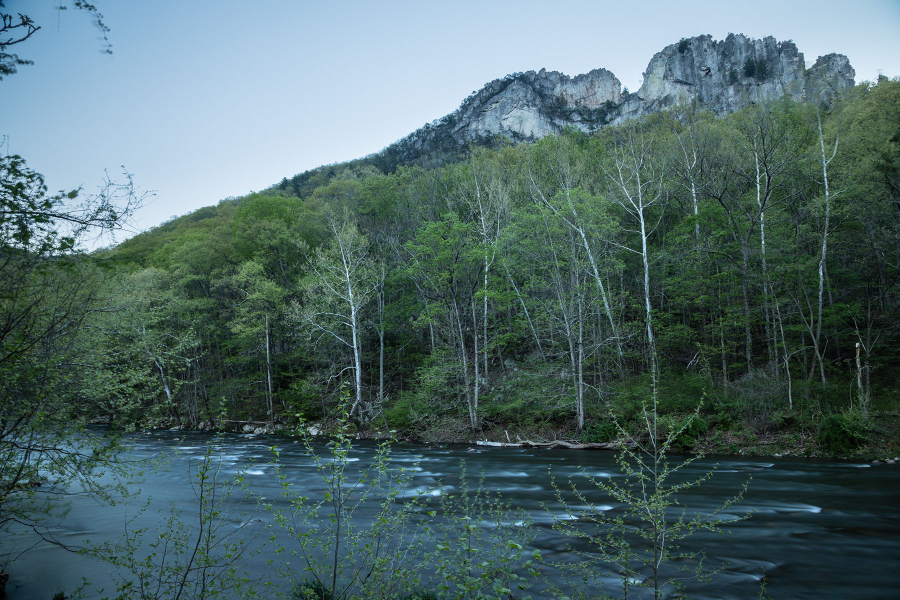Glimpse geologic history at Seneca Rocks
West Virginia landmark gets hikers and climbers up-close with ancient rock formations

Seneca Rocks rises above the North Fork of the South Branch of the Potomac River in Pendleton County, West Virginia, after sunset on April 28. The only “true peak”—that is, inaccessible except by rock climbing techniques—on the East Coast, the site is popular with rock climbers. Today, a walkable trail of steps and switchbacks leads to an observation deck, allowing those who prefer not to rock climb an overlook of the river valley.
One of the best-known landmarks in West Virginia, Seneca Rocks sits on the western edge of the Wills Mountain Anticline—a geologic ridge formed more than 200 million years ago that extends from southern Pennsylvania, through Maryland and West Virginia, and into Virginia. The peak itself consists of layers of sedimentary rock that were upheaved and turned on their side, creating the characteristic sheer rock faces. Millions of years weathered away layers of softer rock, revealing vertical layers of the erosion-resistant Tuscarora sandstone characteristic of many formations in eastern West Virginia.
From a human’s perspective, geologic changes take place at an unfathomably slow pace, unlikely to be noticed over the span of one’s lifetime. At Seneca Rocks, however, one such change took place very quickly, in a highly noticeable way.
For years, a thin rock spire known as the Gendarme—French for “pinnacle” and a term used by rock climbers to refer to freestanding rock formations—stood precariously between the north and south peaks. But on October 29, 1987, at 3:27 p.m., the 25-foot-tall, 20-ton slab finally fell to the ground. No hikers were harmed, but witnesses in the area described seeing “a huge cloud of dust and flying debris” and hearing a sound similar to “the Navy fighter jets from Norfolk” that would frequently take practice runs over the area.
Learn more about Seneca Rocks.

Comments
There are no comments.
Thank you!
Your comment has been received. Before it can be published, the comment will be reviewed by our team to ensure it adheres with our rules of engagement.
Back to recent stories